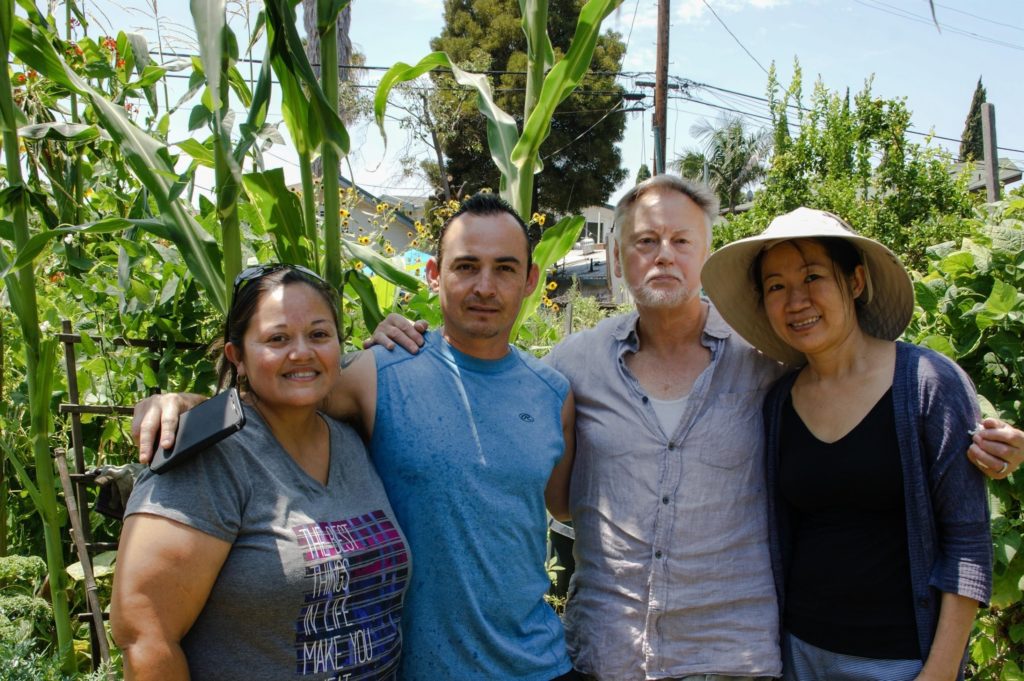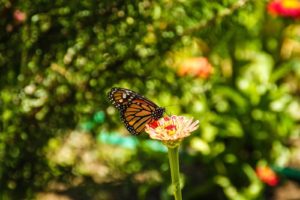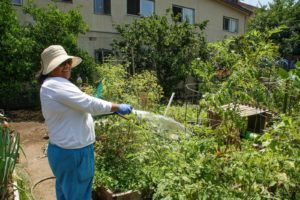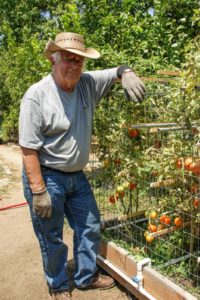
Meet Fountain Community Gardeners
It was a hot Saturday morning in Hollywood when I arrived in the residential neighborhood where Fountain Community Garden is located. The vibrant green that saturated the lot stood out between the houses and apartment buildings. I stepped from concrete to dirt as I entered the garden and made my way through the plots to the back where I met Alex Alferov, the garden manager. Joining Alex were Laura Guzman and Jessica Tarr, two members of Fountain’s steering committee. We sat down around a table not far from an introductory class led by Fountain’s own Master Gardener. We spoke about the characteristics unique to Fountain, the benefits of community gardens, and the struggles they face.
There are many things that make Fountain unique, from their holiday events to the crops they grow. Alex spoke highly of their annual Día de Los Muertos celebration in the garden. Each year they construct an altar and invite gardeners and community members to participate in cultural activities. Potlucks, art programs, and several workshops including flower drying, soap making, and pickling constitute some of the ways in which gardeners can get more involved and learn new skills. The diversity seen among Fountain’s gardeners is most apparent in the crops grown at Fountain. From chipilín to lemongrass, kohlrabi to even saffron, the embodiment of a culture is visible in what they grow and bring to the garden. Fountain is known for their accreditation as a Monarch Butterfly Waystation due to the milkweed grown there which provides a nesting ground for Monarch butterflies. Generations of butterflies have begun their lives at Fountain before making their way to mountains in Central Mexico for the winter. These elements are what make up the fabric of this community garden and provide benefits to all those that participate.
In the urban jungle that is Los Angeles, the chances of having access to real tomatoes or relationships with one’s neighbors are slim to none. “You could live in a place for ten years and you could not know who your neighbors are. But in a garden, there’s no barrier,” says Jessica. Community gardens provide more than the green space so desired by city councils, they provide opportunities for knowledge sharing, community building, and a place to get away from the hustle and bustle of our daily lives. Laura explains that she enjoys her time at the garden because “it’s peaceful and it feels like you’re not in L.A,” and because it provides a “sense of community” because of the diverse variety of people one is able to meet.
These benefits do come at a cost. Within the garden, Alex speaks of his struggle in dialoguing “members of the garden into realizing that they all have to put a certain amount of work into the garden,” which is seen in the low turn out of today’s workday. The leaders often struggle with motivating gardeners to participate and attend work days. Another common issue is younger generations having a lot of enthusiasm in the beginning, but not being able to hold up their commitment to their plot as they realize how much work is required to tend to a plot. All these issues are augmented as the LADWP water rate hike threatens water bill costs over the coming years, and garden leaders must confront the issue of raising dues or finding funding. As developers begin to push increasingly more people out of the area, Fountain becomes increasingly important as a green space, as a community center, and as a way for people sustain themselves.
by Elsie Andreyev
Intern at the LA Community Garden Council and student at UC Berkeley studying environmental politics and food systems




